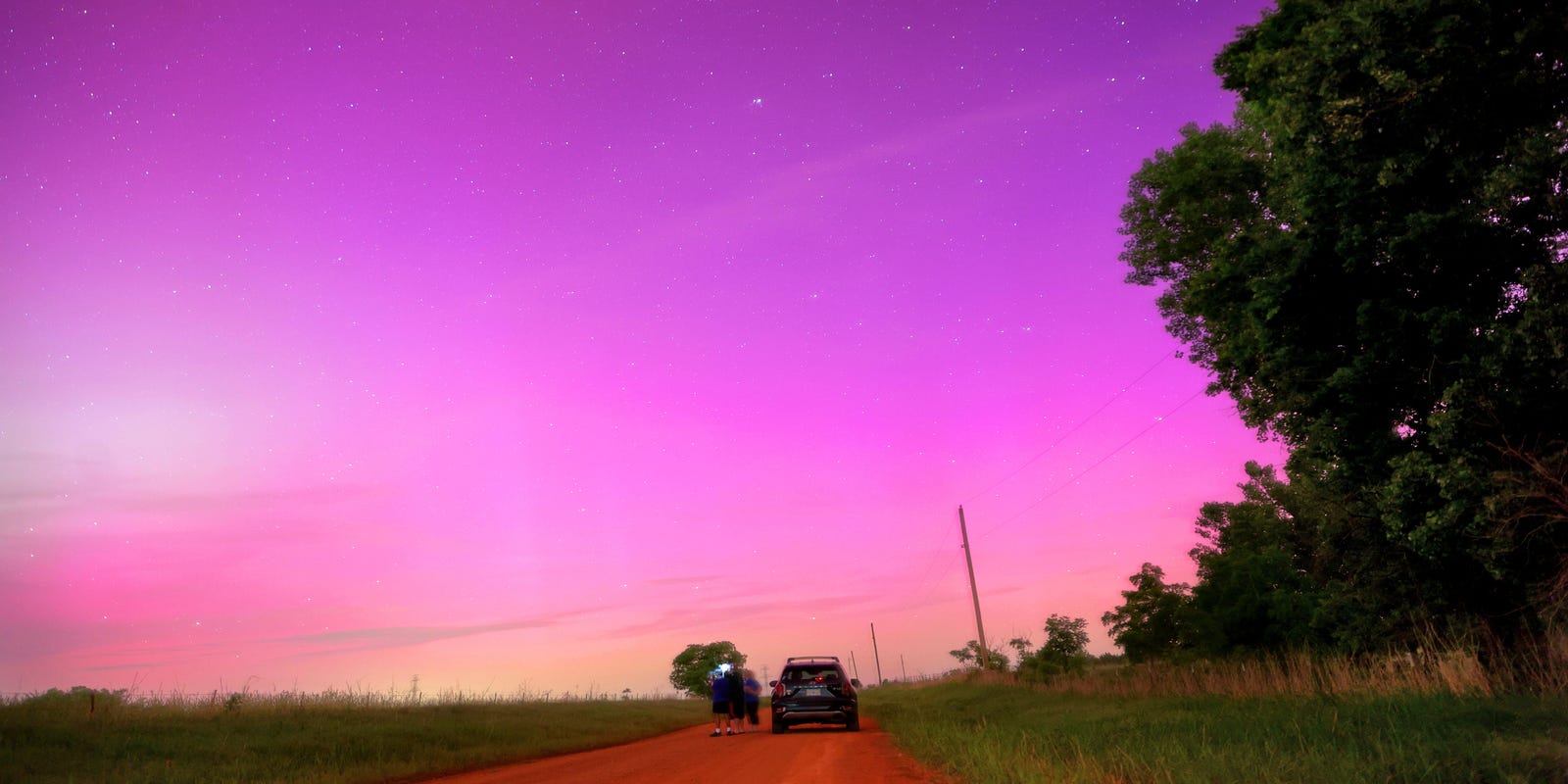A colossal solar storm, the most powerful in decades, ignited breathtaking auroras that captivated spectators worldwide on Friday night. The dazzling display of colorful lights, typically confined to polar regions, extended as far south as Florida and the Bahamas, surprising and delighting observers who eagerly awaited the celestial show.

Another Chance to Witness the Aurora
For those who missed the awe-inspiring event, there’s hope for another glimpse of the auroras on Saturday night or Sunday. The Space Weather Prediction Center forecasts potential widespread visibility across the United States, contingent upon favorable weather conditions. However, predicting space weather remains challenging, relying on observations of the distant sun to anticipate celestial phenomena accurately. Northern lights, or auroras, offer a mesmerizing spectacle best observed away from urban light pollution. Despite this, individuals in cities such as metro Detroit reported witnessing the ethereal glow of the auroras, underscoring the exceptional intensity of the solar storm.
Forecast for Auroral Visibility
The Space Weather Prediction Center’s experimental forecast indicates a promising outlook for auroral visibility across various states, including Oregon, Nebraska, Indiana, Pennsylvania, and New York, on Saturday night. However, the extent of visibility hinges on dynamic factors like weather conditions. On Sunday, the auroras may grace the skies once more, reaching as far south as Alabama and northern California. The anticipated effects of the solar storm are expected to manifest Sunday morning ET, offering another opportunity for celestial enthusiasts to witness nature’s dazzling spectacle.
Cloudy Obstacles and Hopeful Outlook
While cloud cover may obstruct visibility in certain regions, there’s optimism that breaks in the clouds will afford glimpses of the auroras. AccuWeather meteorologist Tom Kines emphasizes the potential for sightings even amidst partial cloud cover, encouraging viewers to remain hopeful and vigilant.
Unprecedented Solar Activity
The unprecedented strength of the solar storm, classified as an “extreme” or G5 storm, marks a significant event in space weather history. It’s the first G5 storm to impact Earth since 2003, heralding a surge in geomagnetic activity with far-reaching effects. The mesmerizing auroras, while visually captivating, also signify the onset of geomagnetic storms with potential consequences for terrestrial infrastructure. Reports of power grid irregularities and communication disruptions underscore the broader impact of solar activity on technological systems.

Astronomical Wonders and Cosmic Forces
The celestial ballet of particles and magnetism between the Sun and Earth creates the intricate phenomenon known as auroras. NASA describes this phenomenon as a mesmerizing dance fueled by solar activity, where eruptions from sunspot clusters unleash powerful geomagnetic storms.
